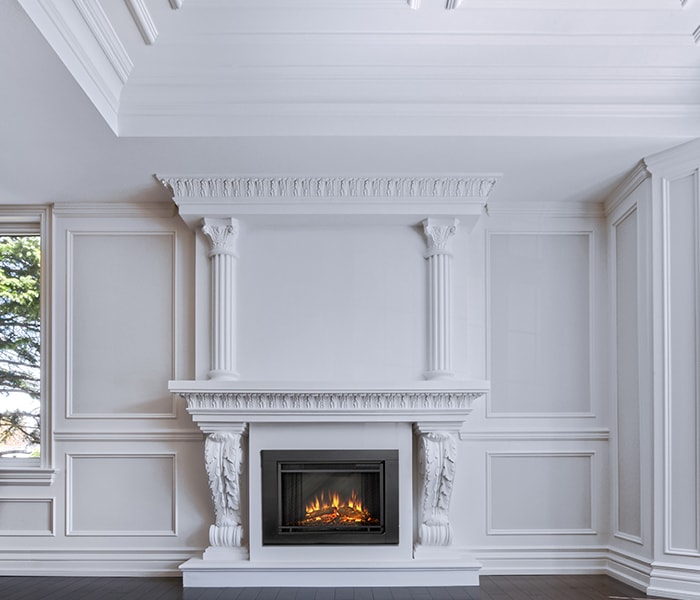Moulding is essential in architectural design, adding elegance and refinement by transitioning smoothly between walls and ceilings. Available in various styles, sizes, and colors, plain cornice moulding enhances a home’s beauty, from classic to contemporary designs. This section underscores their importance in interior design, covering types like crown moulding, cornice, and plain cornice. For centuries, these elements have added sophistication to buildings, covering transitions between surfaces like walls and overheads. They come in materials such as wood, polyurethane, and MDF, with polyurethane being favored for its light weight, easy installation, and resistance to acid and alkali. Choosing the right moulding can create an elegant space that reflects your personal style.
What Is a Plain Cornice?
Cornice is a type of decorative element that enhances the architectural aesthetics of a room. It is typically installed at the junction of a wall and ceiling, ensuring a seamless transition between the two surfaces. Cornices can add refinement and sophistication to a home and are available in a variety of styles and designs to suit different tastes and design requirements. With their light weight and easy installation, cornices are a popular choice for interior decoration projects. Whether you’re aiming for a classic or contemporary look, these versatile products can be used to infuse grace into any room. The ease of making cuts during installation also contributes to a high-quality finish.
Benefits of Installing Light Weight Plain Cornices
Designing a cornice involves considering style, size, length, color, and material. A plain cornice offers a simple, clean look, while ornate ones add sophistication. Choose from lightweight materials like polyurethane and wood to fit your architectural needs and enhance your home’s beauty. Consider cost, location, and installation time to select the ideal moulding. Many products are easy to install, customizable, and can be finished with high-quality paint for an efficient process. To ensure satisfaction, samples are often available to help you make the best choice for your design project.
Plain Cornice Installation Process
Cornice or crown mouldings provide an elegant transition between ceilings and walls. Available in various profiles and sizes, they resist corrosion, acid, and alkali for lasting durability. We offer both custom profiles and a wide selection of plain cornices. These mouldings are easy to cut and install, ensuring a professional finish. Ordering is straightforward, with expert advice available throughout. Our plaster crown mouldings come in styles from traditional to contemporary, with pre-finished surfaces for quick installation, effortlessly enhancing your home’s elegance.
Step 1: Book a Consultation & Site Measurement
Send us your project details using the Book Consultation button, and we’ll send you a custom quote. Our team will then visit your location to take accurate measurements, assess your space, and discuss design preferences. A detailed description of the process, including a drawing of the proposed cornice layout, will be provided. Once you’re satisfied, you can proceed with the purchase, ensuring a seamless integration of style and functionality in your home.
Step 2: Final Design & Manufacturing Cost
Once measurements are confirmed, we’ll finalize the cornice design with you. You’ll receive a detailed breakdown of the manufacturing cost and timeline. Upon approval, we’ll begin crafting your custom cornice. To ensure you are satisfied with the style and finish, we provide samples for your review before production begins.
Step 3: Installation & Finishing Touches
Our expert team ensures precise and secure cornice installation, filling gaps for a seamless finish, ready for painting if needed. We guarantee efficient, professional installation for durable results. The installation time varies by project type and size, which we discuss during your free consultation.
Frequently Asked Questions About Plain Cornices
1. What is a plain cornice?
A plain cornice is a type of decorative moulding positioned where the ceiling converges with the top of the room. It creates a seamless transition between surfaces and adds a clean, elegant finish to any space. Unlike ornate cornices, plain cornices have a simpler design, making them ideal for all interior styles.
2. Why choose lightweight cornices like polyurethane?
Lightweight cornices, especially those made from polyurethane, are easier to install, cost-effective, and highly resistant to environmental damage. They can be cut and shaped with ease, making them a practical choice for both DIY and professional installations.


